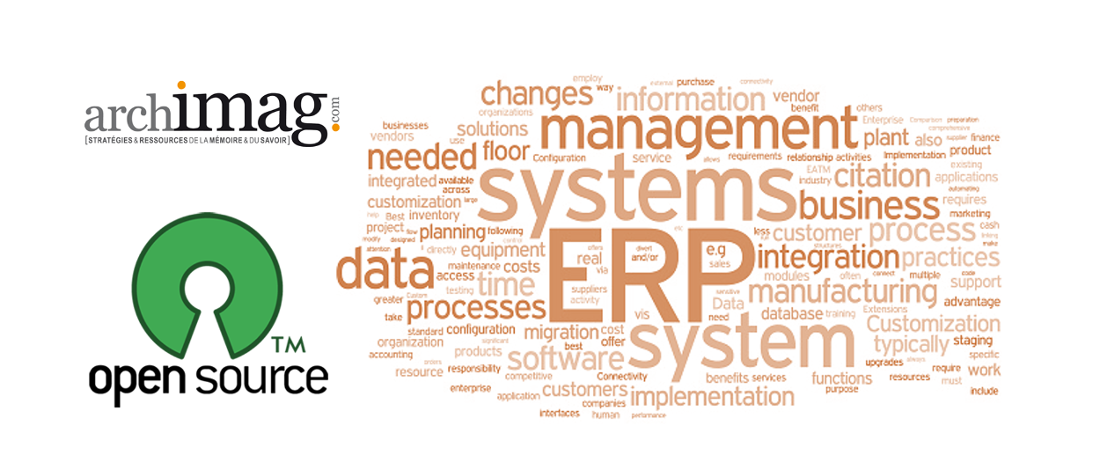Archimag, our favorite MagIT, is preparing a new Open-Source file. This time, the choice of solution integrators in organizations which will be released soon. It made us wish to participate and think about what we imagine is a good integrator. What are the questions?
Here then is a draft of our reflection
The technical part of a DMS / ECM solution integration is put aside because it is obvious that an integrator must know the characteristics of his solution and its possibilities of integration into the IT systems of organizations.
WHEN YOU WANT TO USE AN OPEN-SOURCE INTEGRATOR FOR YOUR DMS / ECM PROJECTS, WHAT ARE THE KEY POINTS TO CONSIDER.
User-centric responses and service.
- Above all, the company requesting an Open Source solution must take into account that integrating a DMS / ECM is a "long-term commitment" to their employees, who will be users.
- For an organization, it is very difficult to carry out such a change alone: firstly, because they do not know the solution and secondly, often (especially in SMEs) document processes and Business process management are very poorly defined.
- An integrator must not only "install" the tool, but also monitor and offer services in the context of change management (organizational advice around the platform, tutorials, training, etc.).
- When the integrator is also the publisher of the solution, he knows the tool better and can provide more appropriate advice in the coupling with other applications of the customer's IT system.
- Check the integrator’s involvement in Open Source communities. If he is actively involved, this is proof that he is constantly seeking to improve the quality of his services.
- Know the integrator's references to see the scope of the projects carried out so far.
- Know the type of realized projects: takeover of DMS, coupling with CRM, ERP, coupling with OCR scanner etc...?
- It is interesting to know the official status of the integrator towards the Open Source publisher: is there an agreement? Is it a real partnership? To what extent is the publisher of the open source solution involved or not in the project?
MAIN STAGES OF THE PROJECTS:
Responses oriented towards project management and organizational structure.
- First of all, get to know each other! It is essential to establish a relationship of trust with the integrator. He needs a maximum of information on the structural organization, in order to be able to advise. The customer, for his part, needs maximum information on the capabilities of the platform. Such a project must be carried out in total collaboration from the start, in order to hope for success.
- On the integrator side, step 1 is researching information and defining an interlocutor / project manager in the customer company.
- Step 2, the definition of the framework of the project (which service (s) involved, to what degree, what is the IT maturity of the users, especially what is the level of collaboration in the company) and objectives.
- Step 3, it would be wise to conduct an information campaign to inform the concerned public (all those who did not take an active part in the definition of the project but who will be impacted).
- Step 4 is the training, project-oriented. It is necessary to tutor the users, to encourage them to use by demonstrating the advantages specific to each of them.
- Step 5, continuous monitoring step. Technical and functional support must be provided. Remain available to respond to customer issues.
- The integrator must also inform the customer about the version updates and technology development to anticipate the future requirements of the company.
Pitfalls to avoid:
Common sense oriented answers.
- Avoid starting a project without clearly defined requirements and constraints.
- You must avoid "experts" integrators in many solutions because they may not know the platform well and may be bad advisers.
- Take advantage of Open Source: you must keep as much information as possible on the integration and evolution of the solution in order to be able to change provider if necessary.
- Avoid believing that DMS / ECM project has the end; it evolves with the company and therefore needs a real follow-up.
- Avoid invoicing on a time basis, prefer providers who offer packages. So avoid overcharging.
We wanted to share these main observed elements in the field. Make them available to all those who have the will to participate in the digitization of organizations. To support them in their projects and provide them with answers to the legitimate questions they have.
The CEO-Vision team

